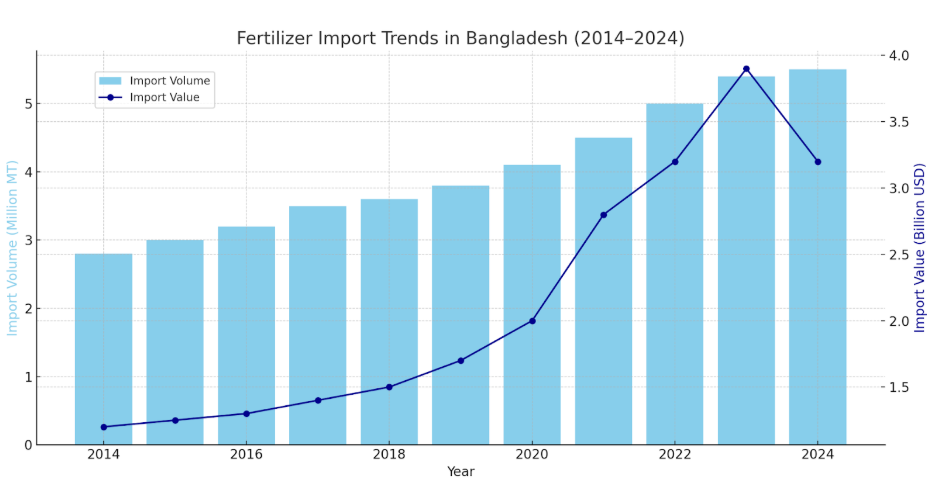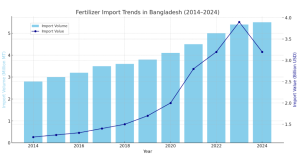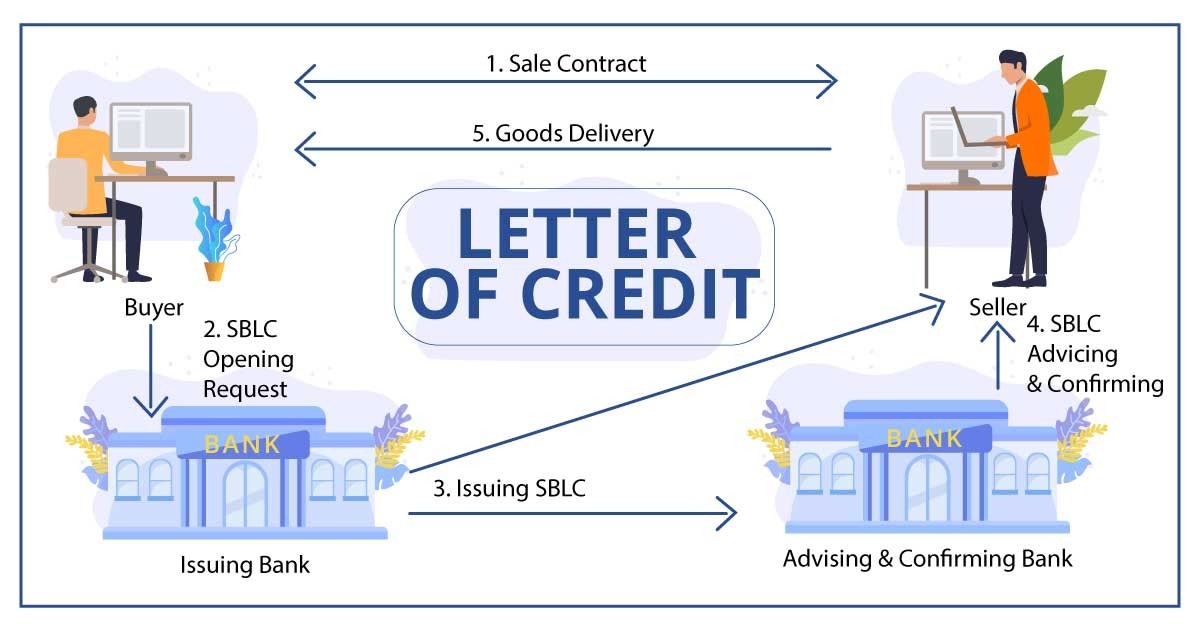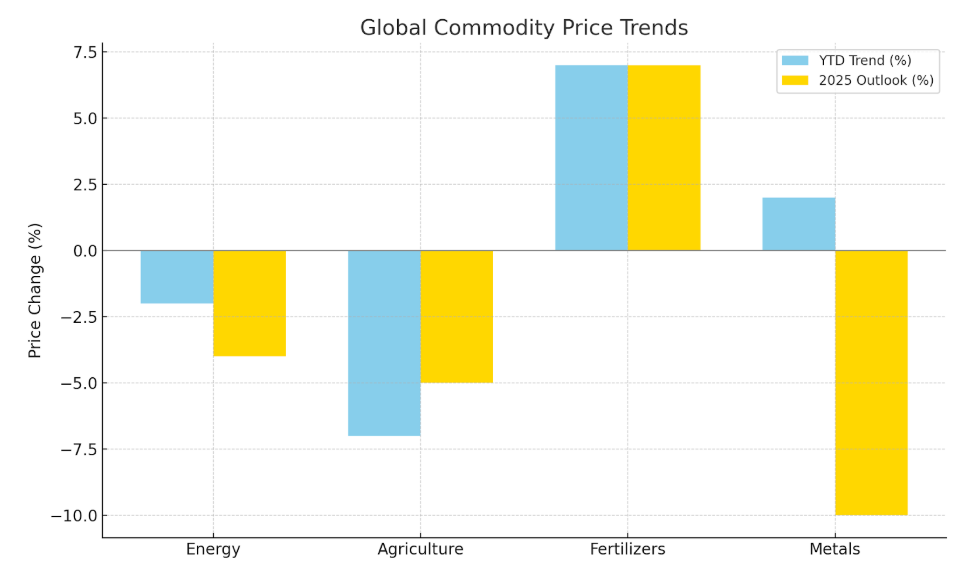
1. Import Volumes & Value
- 2022–23: ~5.41 million MT imported; cost ~US$3.89 billion in first 7 months
- 2023–24 (July–March): ~5.44 million MT, valued at Tk 275 billion (~US$3.2 billion)
- 2015: US$1.26 billion worth of fertilizer imports
- Dec 2024: Import value was BDT 28,968 million (~US$273 million)
- Jan 2022 peak: Import value peaked at BDT 60,679 million (~US$572 million)
2. Demand vs. Domestic Production
- Annual demand has surged to ~6–7 million MT
- 80% of the demand must be met through imports due to limited local
- Government factories (BCIC) supply ~1.1–1.2 million MT annually, covering ~15–20% of demanden.wikipedia.org+3scribd.com+3en.wikipedia.org+3.
3. Price Volatility & International Market
- Global prices spiked in 2022 (Russia–Ukraine war), e.g., urea at US$821/MT in Q1 2022; dropped to ~US$351/MT by Q1 2024
- Bangladesh responded by importing from Russia, Saudi Arabia, Qatar, Morocco, and more in 2024 to offset production shortfall, fertilizerdaily.com.
4. Import Strategy & Government Response
- FY2023–24: Government approved import of 760,000 MT (150,000 MT in October 2024 alone)
- Sept 2024: BCIC procured 30,000 MT urea from Saudi at US$359/MT; BADC imported 110,000 MT
- March 2024: Cabinet approved 40,000 MT DAP from Saudi (US$576/MT), plus TSP, MOP, and urea from multiple suppliers
5. Monthly Value Trends
- Fertilizer import value ranges: BDT 10 million (June 2007) to BDT 60.7 billion (Jan 2022)
- Dec 2024 figure: ~BDT 29 billion, down from Nov 2024 (~BDT 20.3 billion); recent decline in early 2025 .
| Period | Volume (MT) | Value (US$ / BDT) | Key Trends & Drivers |
|---|---|---|---|
| 2014–2019 | ~15–17 lakh MT/year | ~US$1.26B (2015) | Gradual demand rise, local capacity gaps |
| 2020–2021 | ~16 lakh MT/year | Prices surged post-COVID | Pandemic-related disruptions |
| 2022–2023 | 5.4–5.5 million MT | ~US$3.8–3.9B (peak) | War-driven escalation, gas shortages |
| 2023–2024 | 5.4 million MT | ~Tk 275B (~US$3.2B) | Strategic imports during a price drop |
| 2024–2025 | ~5.4 million MT | ~BDT 29B/month | Stable pricing with consistent demand |
🔍 Key Insights
- Growing Demand: Annual demand has climbed to ~6–7 million MT—domestic production still limited.
- Import Dependency: ~80% reliance on imports makes Bangladesh sensitive to global price swings.
- Price Volatility: Cost peaked in early 2022; dropped in 2023–2024, relieving pressure.
- Active Government Involvement: Approved bulk purchases and diversified sources to stabilize supply.
- Strategic Sourcing: Multi-country procurement strategy enhances resilience.


📦 By Fertilizer Type
- Urea: 2.5 million MT (~46%)
- DAP (Diammonium Phosphate): 1.2 million MT (~22%)
- TSP (Triple Super Phosphate): 1.0 million MT (~18%)
- MOP (Muriate of Potash): 0.8 million MT (~14%)
🌍 By Import Source Country
- Saudi Arabia: 30%
- Qatar: 20%
- Russia: 15%
- China: 15%
- Morocco: 10%
- Others: 10%
(includes UAE, Jordan, Tunisia, etc.)
✅ Recommendations
- Portfolio Diversification: Continue diversifying suppliers to buffer against global shocks.
- Advance Purchase Agreements: Use forward contracts to lock in lower prices.
- Local Production Investments: Encourage BCIC expansion to reduce import dependency.
Digital Forecasting: Use AI and ERP analytics to forecast demand and price trends more precisely.




